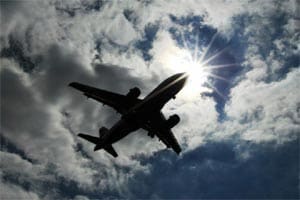An industry report on Tuesday said that if certain policy measures are undertaken in a time-bound manner, the domestic aviation industry has the potential to grow from its current level of $23-25 billion to $250 billion by 2025.
The Tata Vistara-Capa report has identified measures like removing the 5/20 clause, better regulatory framework like simplifying route-disbursement-guidelines, reducing fuel taxes, and investment in airport infrastructure, as necessary to give a fillip to the aviation industry. Such measures would lead the domestic air traffic to increase three-fold and contribute up to 5% of the country’s GDP. The industry would have the potential to generate employment for more than 2.3 million people.
Aviation turbine fuel (ATF) currently comprises around 50% of the cost of carriers. “Cost of ATF in India is highest in the world. It is 35% of a carrier’s operating cost, but because of taxation it becomes 50% more expensive than most other countries,” said Mukund Rajan, director of board at Tata SIA Airlines, which operates Vistara.
The report also highlighted that there is an urgent need to overhaul aviation infrastructure in the country. Each airport in the metro has run out of capacity and needs a second airport. Also, in the next decade 41 of the largest airports will exceed design capacity. Lack of maintenance, repair and operation (MRO) facilities forces carriers’ to take 90% of the planes to Sri Lanka, Singapore and Dubai for MRO operations. This too increases cost.
Rajan said India uses only 26% of its bilateral rights, which allows foreign players to ferry 70% of the international traffic. International passengers are expected to go from 51 million to 120 million by 2025. The number of aircraft India will in the next 10 years go up to 1,084 from 394, and will reach 5,626 aircraft in 2025.
Meanwhile, Phee Teik Yeoh, CEO of Vistara, said Dubai has a model airport — it has flights originating and landing from 220 destinations, compared to 59 destination in New Delhi, the country’s busiest airport.
This is also another reason why Gulf airlines — Emirates, Qatar Airways and Etihad — have 20% of the international flyers to themselves.
The 5/20 rule, which limits airlines to start international operations before five years, Yeoh said, is restrictive.
Speaking on Vistara, which started operations around 10 month back, Yeoh said the airline is evaluating reconfiguration of its aircrafts, which may see removal of either business class or premium economy.
“We are looking at all possibilities. But no decision has been taken, yet,” he said.
This may be because the airline is plagued by one of the lowest passenger load factors in the industry, averaging 60%. Most of its competitors have a PLF of over 80%. The airline has found it difficult to fill its premium economy class seats, which is priced much higher than economy class fares.

